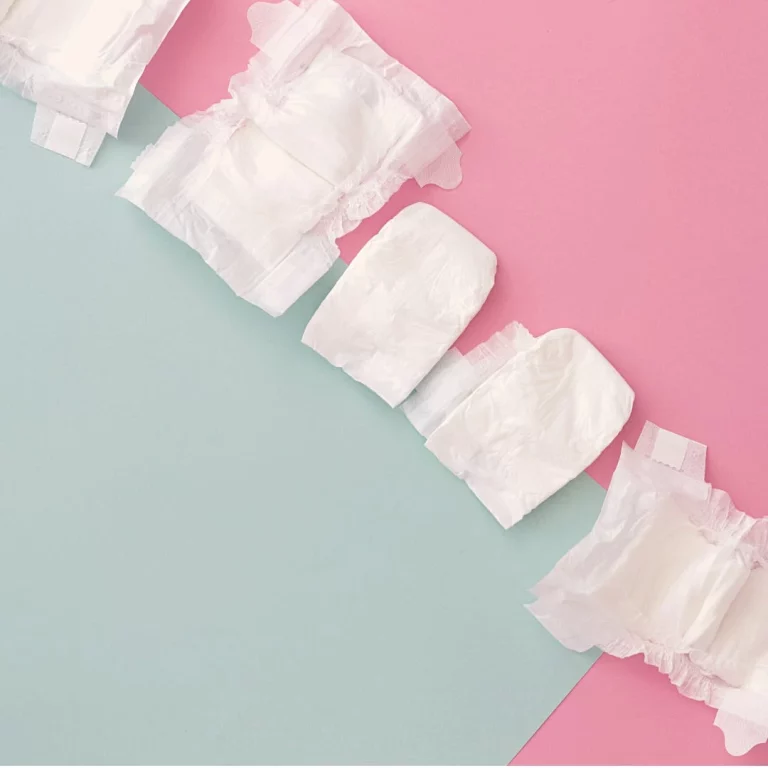How To Heal Perineal Scar Tissue After Childbirth
Perineum scar tissue is a common issue that many women face after giving birth. Postpartum women often have a lot to deal with from breast pain, to postpartum rib pain, and of course pain from giving birth.
The perineum is the area between the vagina and anus, and it can tear or be cut during childbirth, resulting in scar tissue. Perineal scars can cause discomfort, pain, and even affect sexual function.
Perineum Scar Tissue & Vaginal Tears
Vaginal tears and episiotomies can happen during childbirth. It is estimated that up to 85% of women experience some form of tearing during vaginal delivery. As the baby’s head comes down the birth canal, the opening of the vagina may not be enough to accommodate the delivery. This can lead to perineal trauma and tearing in the surrounding area.
While the body has a remarkable ability to heal, the scar tissue that forms can cause long-term problems if not addressed.
Fortunately, there are ways to manage perineum scar tissue after birth. Self-massage, physical therapy, and other treatments can help break up scar tissue and improve symptoms. It’s important for women to speak with their healthcare provider about any concerns they have regarding perineal scar pain and to seek treatment if necessary.
What is Perineum Scar Tissue?
The perineum is the area between the vagina and the anus. During childbirth, the perineum may tear or be cut by the healthcare provider to make more room for the baby to pass through. This can lead to the formation of scar tissue in the perineum.
Perineum scar tissue is a natural part of the healing process after childbirth. It is formed when the body repairs the torn or cut tissue in the perineum. Scar tissue is made up of collagen fibers, which are stronger and less elastic than the surrounding tissue. This can cause the scar tissue to feel tight or uncomfortable.
Scar tissue can also cause problems with pelvic floor muscles. Pelvic floor muscles support the bladder, uterus, and rectum. Scar tissue can make these muscles weaker or tighter, leading to problems with bowel or bladder control.
Causes of Perineum Scar Tissue After Birth
Perineum scar tissue is a common issue that many women face after childbirth. It can be caused by a variety of factors, including:
Episiotomy
An episiotomy is a surgical cut made to the perineum during childbirth to make the vaginal opening larger. This can result in scar tissue formation.
Vaginal Tears
Tears can occur naturally during childbirth, and if they are deep or extensive, they can result in scar tissue formation. The way a tear is sewn up can also dictate the possibility of scar tissue.
Infection
Infections can occur during childbirth or the healing process, leading to increased scar tissue formation.
Healing Process
The natural healing process after childbirth can also result in the formation of scar tissue. Based on your collagen and tissue, some people are prone to develop scar tissue compared to others.
It’s important to note that not all women will experience perineum scar tissue after childbirth, and the severity of the scar tissue can vary from woman to woman. However, it’s important to be aware of the potential causes and to take steps to prevent or manage scar tissue formation. Remember to also take a multivitamin or a prenatal (even though you are post birth) to make sure your health status is optimized.
If you are concerned about perineum scar tissue after childbirth, it’s important to speak with your healthcare provider. They can provide guidance on how to manage the scar tissue and reduce any discomfort or pain that you may be experiencing.
Symptoms of Perineum Scar Tissue After Birth
Perineum scar tissue can cause a range of symptoms that can be uncomfortable and painful. Here are some of the most common symptoms:
- Urinary and fecal incontinence: Scar tissue can weaken the muscles and tissues around the perineum, including the anal sphincter, which can result in urinary and fecal incontinence. Women with perineum scar tissue may experience leakage of urine or feces when they cough, sneeze, or laugh.
- Painful bowel movements: Scar tissue can cause the perineum to become tight and rigid, which can make bowel movements painful and uncomfortable. Women with perineum scar tissue may experience constipation, straining, and pain during bowel movements.
- Pain during sex: Scar tissue can make the perineum less elastic, which can cause pain and discomfort during sex, especially during vaginal penetration. Women with perineum scar tissue may experience painful sex, as well as burning, or discomfort during intercourse.
- Itching and irritation: Scar tissue can cause the perineum to become itchy and irritated, which can be uncomfortable and distracting.
- Chronic pain: Unfortunately, for some women, this perineal pain turns into chronic pelvic pain. This pain often feels like a burning sensation as nerve fibers are inflamed and irritated.
If you are experiencing any of these symptoms, it is important to talk to your healthcare provider. Your provider can help you develop a treatment plan that can help alleviate your symptoms and improve your quality of life.
Related: Urethral Bulking Agents For Urinary Incontinence
Diagnosis of Perineum Scar Tissue After Birth
Perineum scar tissue after birth can be diagnosed by the presence of certain symptoms. The most common symptom is the presence of a tender nodule at the scar site. This nodule may be painful or itchy and may become more noticeable during menstruation or sexual activity. Other symptoms may include:
Related: Disposable Underwear For Incontinence & Postpartum
- Excessive, raised or itchy scar tissue
- Difficulty passing urine or stool
- Pain during intercourse
- The feeling of tightness or discomfort in the perineal area
If you are experiencing any of these symptoms, it is important to consult with your healthcare provider. They can perform a physical examination to confirm the presence of perineum scar tissue and rule out any other underlying conditions.
During the physical examination, your healthcare provider may ask you questions about your medical history and any previous childbirth experiences. They may also perform a pelvic exam to assess the extent of the scar tissue, and the pelvic floor and then determine the best course of treatment.
In some cases, your healthcare provider may recommend additional diagnostic tests, such as an ultrasound or MRI, to evaluate the extent of the scar tissue and rule out any other underlying conditions.
Overall, if you are experiencing any symptoms of perineum scar tissue after birth, it is important to seek medical attention promptly. Suffering in severe pain can make the already difficult postpartum period even more challenging. Many mothers feel they have no options. Often times pain management doctors and pelvic physical therapists are better equipped to treat perineal tears and scars as compared to their OBGYN who may have done the delivery.
Treatment Options for Perineum Scar Tissue After Birth
Non-Surgical Treatment Options
Physical therapy is a common non-surgical treatment option for perineum scar tissue after birth. A pelvic physical therapist will use various techniques to help reduce painful scar tissue and pelvic muscle spasms. Scar tissue mobilization is one technique that can help break down adhesions and improve tissue mobility. This technique involves massaging the bands of scar tissue to increase blood flow and promote healing.
Perineal massage is another non-surgical treatment option that can help reduce perineum scar tissue after birth. This technique involves gently stretching and massaging the perineum with gentle pressure to improve tissue elasticity and prevent scar tissue formation. This scar tissue massage can also help reduce pain and discomfort during intercourse.
In addition to physical therapy and perineal massage, there are other non-surgical treatment options that can help reduce perineum scar tissue after birth. These include:
- Topical creams and ointments
- Warm compresses
- Dry needling (may be done by a pelvic physical therapist in certain states)
- Kegel exercises (depending on whether the pelvic floor is hypertonic or hypotonic)
Surgical Treatment Options
If non-surgical treatment options do not provide relief, surgical treatment options may be necessary. Surgery for perineum scar tissue after birth typically involves removing the scar tissue and reconstructing the perineum. This procedure is known as perineoplasty.
Perineoplasty is typically performed under local anesthesia and takes about 30 minutes to complete. The procedure involves making incisions to remove the scar tissue and then suturing the perineum back together. Recovery time varies depending on the extent of the surgery, but most women are able to resume normal activities within a few weeks.
It is important to note that surgery is not always necessary to treat perineum scar tissue after birth. Non-surgical treatment options are often effective in reducing pain and discomfort associated with perineum scar tissue.
Prevention of Perineum Scar Tissue After Birth
Perineum scar tissue after birth can cause vaginal area discomfort, pain, and even affect sexual function. Fortunately, there are ways to prevent or minimize the formation of scar tissue. Here are some tips:
- Perineal massage: Massaging the perineum in the weeks leading up to childbirth can help to soften the tissue and make it more flexible, reducing the risk of tearing and scar tissue formation.
- Proper pushing techniques: Pushing too hard or too fast during delivery can increase the risk of perineal tears and scar tissue formation. It’s important to listen to your body and work with your healthcare provider to push in a controlled and gradual manner.
- Episiotomy: In some cases, an episiotomy may be necessary to prevent a severe tear. However, it’s important to discuss the pros and cons of this procedure with your healthcare provider before making a decision. Often times they are done because labor is not progressing and the baby may not be descending.
- Physical therapy: Pelvic floor rehabilitation can be effective in helping to prevent perineal tearing and scar tissue formation. It can also aid in recovery and improve sexual function postpartum. Pelvic physical therapists are a great resource to learn how to breathe and push during labor as well as a doula.
By taking these steps, you can reduce your risk of perineal tearing and scar tissue formation after childbirth. However, it’s important to remember that every birth is unique and some women may still experience tearing or scarring despite taking preventive measures. If you do experience perineal tearing or scar tissue formation, there are treatments available to help manage symptoms and promote healing.
How To Heal Perineal Scar Tissue: Summary
Perineal tears and episiotomies are common during childbirth and can lead to the formation of scar tissue in the perineum. This scar tissue can cause discomfort, painful intercourse, and even sexual dysfunction for some women.
Fortunately, there are several treatments and therapies available to help manage perineal scar tissue. Pelvic floor rehabilitation (pelvic floor), scar massage therapy, acupuncture and other non-invasive treatments can help alleviate pain and discomfort. Surgical options may be necessary in more severe cases. Pain relief is absolutely necessary to improve enjoyment of sexual intercourse and quality of life.
It is important for women to speak with their healthcare provider about any concerns they may have regarding perineal scar tissue and any pain they may be experiencing.
We discuss products we think are useful to people. If you buy something through our links, we may earn a commission. Remember to check with your personal physician to see if a product recommended is right for you.







